Stop the presses! Performax Labs, a brand designed for serious athletes, has just released a new limited-edition pre-workout formula - and it's come ahead of all of the Black Friday 2023 launches out there. Most are familiar with the incredible HyperMax Extreme formula, but this is on a whole new level...
Meet HyperMax'D OUT: Performax Labs Limited Pre to Dominate the End of 2023
Hyper Max'd Out definitely lives up to its name. It's absolutely jam-packed with powerful designer ingredients, hitting many different mechanisms of action to give you massive pumps, potent ergogenic effects, and catecholamine-induced euphoria thanks to its two-pronged PEA supplementation strategy.
473mg Total Caffeine in 2 Scoops... and what's this 15mg YoMax Blend?!?!
But that's not all: Look at this crazy 15 milligram "YoMax" blend that's a combination of two versions of yohimbine -- alongside 473 milligrams of total caffeine (in two scoops from two sources) -- how strong is this thing going to be?! It kicks off with a whopping 8-gram dose of citrulline, and just gets better from there.
Needless to say, you may not want to two-scoop this one right away (or ever?)...
Let's get into how it works, but first, check PricePlow's news and deals:
Performax Labs HyperMax'D OUT – Deals and Price Drop Alerts
Get Price Alerts
No spam, no scams.
Disclosure: PricePlow relies on pricing from stores with which we have a business relationship. We work hard to keep pricing current, but you may find a better offer.
Posts are sponsored in part by the retailers and/or brands listed on this page.
This area is reserved for Team PricePlow's upcoming videos.
Subscribe to our channel and sign up for notifications so you catch it when it goes live!
HyperMax'D OUT Ingredients
In a single 2-scoop (24 grams) of Hyper Max'd Out Full Dose Pre-Workout from Performax Labs, you get the following:
-
L-Citrulline – 8,000 mg
Citrulline is an amino acid that boosts nitric oxide (NO). However, citrulline is not the direct precursor to NO – that would be arginine. Here's what the conversion pathway looks like, Citrulline → Arginine → nitric oxide (NO).[1]
Looking at this, you might think it makes more sense to skip citrulline and take arginine instead. But, in practice, that doesn't work due to arginine's relatively low oral bioavailability. While citrulline may be an indirect precursor to NO, it ultimately works better because the body absorbs much more of it. Ironically, citrulline is better at increasing arginine blood levels compared to oral arginine supplements.[2,3]
With higher NO levels comes vasodilation, a phenomenon where the smooth muscle tissue that lines arterial walls relaxes, causing the arteries themselves to dilate (expand in diameter). This means a greater volume of blood can flow through those arteries, leading to improvements in tissue perfusion, as well as significant decreases in heart rate and blood pressure.[4-6]
With better circulation comes better tissue oxygenation, more efficient nutrient delivery to hungry cells, and more efficient removal of cellular-metabolic waste. The upshot of all this is better performance and faster recovery from exercise. Endurance, in particular, seems to be improved by upregulating NO.
Studies on citrulline show that it can improve:
- Oxygen utilization[7]
- Top-end power[7]
- Endurance – by as much as 50%[8]
- Delayed onset muscle soreness after exercise[8]
- Growth hormone (GH) production[9]
- Sparing protein from catabolism[10]
- Muscle protein synthesis[11,12]
- Ammonia clearance[13,14]
- Cortisol-to-DHEA ratio[14]
All in all, citrulline is an ingredient that can support the athletic goals of endurance athletes and power athletes alike.
-
Beta-Alanine – 3,200 mg
Beta-alanine is a staple ingredient in pre-workout formulas, an ergogenic aid famed for its ability to increase athletic endurance. It works by combining with the amino acid L-histidine to create a dipeptide molecule called carnosine, which plays a key role in removing lactic acid from muscle tissue. Since lactic acid buildup produces muscular fatigue, speeding up its removal can delay the onset of fatigue.[15]
Again, you may be wondering why not just take carnosine instead? Same answer as in the citrulline section: the precursor beta-alanine is much more bioavailable than carnosine itself, making beta-alanine supplementation a more practical strategy. Histidine supplementation isn't necessary since it's abundant in commonly-eaten foods. Beta-alanine is almost always the bottleneck on carnosine synthesis.[16,17]
Two meta-analyses, looking at over 40 peer-reviewed studies, have found that beta-alanine is most effective at increasing endurance during activities conducted at an intensity level that can be sustained for 30 seconds to 10 minutes.[18,19]
Most people experience a tingling sensation in their face and/or torso after taking beta-alanine. If this happens to you, don't worry about it – it's benign.[20]
-
GlycerSize (65% Glycerol powder) – 2,000 mg
Glycerol, also known as glycerin, is a naturally-occurring alcohol compound that your body produces as a byproduct of cellular respiration.
When it comes to hydration, endurance, cell volumization, and heat tolerance, water is king. And this simple ingredient -- glycerol -- enables you to hold more water for better performance!
Glycerol is an osmolyte, meaning its presence can increase water volume by manipulating osmotic pressure gradients across cellular membranes. When supplemented in high doses, glycerol's high affinity for water causes an increase in the body's total water retention,[21,22] leading to a state called cellular hyperhydration in which – as you can probably guess from the name – cells contain more water than usual.
Research shows that glycerol-induced cellular hyperhydration can increase athletic endurance. One study found that oral glycerol supplementation increased cyclists' time to exhaustion during an exercise test by an impressive 24%![23]
Another study found that taking glycerol for 20 days can increase anaerobic power.[24] So, again, glycerol is not just for endurance athletes.
Like citrulline, glycerol can benefit cardiovascular efficiency by improving circulation while decreasing heart rate and blood pressure.[23,25]
Another key benefit of glycerol is resilience to heat, as cellular hyperhydration can improve cells' resistance to heat shock.[25,26]
-
L-Tyrosine – 2,000 mg
Tyrosine can benefit a pre-workout formula in two crucial ways:
- Tyrosine can support thyroid function since it's a precursor to the thyroid hormones triiodothyronine (T3) and thyroxine (T4).[27,28] This is particularly relevant for gym-goers, since strenuous exercise and caloric restriction – two behaviors commonly practiced by fitness enthusiasts – can interfere with thyroid function.[29,30] In general, the bigger the caloric deficit, the harder your thyroid is liable to get hammered.[31]
- Tyrosine is also a precursor to catecholamine neurotransmitters like dopamine, adrenaline, and noradrenaline.[32-34] Increasing your brain's production of these neurotransmitters can enhance key performance-related mental traits like focus and motivation. Moreover, adrenaline and noradrenaline can increase the rate at which your body burns fat for energy.[35]
As an interesting side note, tyrosine is also great for mitigating the negative effects of sleep deprivation. According to research carried out by the U.S. military, it's even better than caffeine at restoring cognition to baseline during sleep deficits.[36,37]
-
VitaCholine (Choline Bitartrate) – 1,000 mg
Choline is an essential nutrient that's indispensable for the structure and function of cellular phospholipid bilayer membranes.[27]
It's also a prerequisite for the synthesis of acetylcholine (ACh), a neurotransmitter that coordinates learning and memory consolidation.[28] In fact, ACh activity maps onto these processes so directly that we often refer to it as the learning neurotransmitter.
Upregulating ACh reliably improves a wide range of cognitive functions, including not just learning and memory but also psychomotor skills like balance and coordination.[29,30]
The consequences of choline deficiency can be dire; it can include organ damage, muscle wasting, and non-alcoholic fatty liver disease,[32] a condition associated with diabetes and dyslipidemia.[32]
VitaCholine is unique because of its exceptional purity – it consists almost entirely of choline-L, the most bioavailable choline enantiomer.
-
ThinFen (Phenylethylamine HCl) – 500 mg
Phenylethylamine (PEA) is an alkaloid widely regarded as one of the greatest pre-workout ingredients in supplement history. Oral PEA supplementation induces rapid catecholamine release – as dopamine, adrenaline, and noradrenaline flood into your system, you can get a burst of euphoric energy that can be used to power you through your toughest workouts.[33]
The one big issue with PEA is that it's rapidly degraded by the enzyme monoamine oxidase (MAO), meaning its effects only last about five minutes[34,35] – but as we'll see, this problem is addressed in the Performax Hyper Max'd Out formula by the addition of an ingredient called NeuroPEA.
-
Caffeine Anhydrous – 400 mg (of 473mg total caffeine)
Caffeine is a methylxanthine alkaloid that is, obviously, famed for its stimulant properties. What's less widely appreciated is the fact that caffeine is an effective ergogenic aid.
Need a pre-workout on the go that is TSA-safe for air travel? Performax Labs Hyper 3D brings a clinically-tested 6g dose of 3DPUMP-Breakthrough with 300mg caffeine in a small 2oz pre-workout shot!
In the brain, caffeine fights fatigue by blocking the cellular receptor for a nucleotide called adenosine. When your cells burn ATP for energy, adenosine is a natural byproduct that causes fatigue as it builds up in the brain while you're awake. By decreasing adenosine's activity at the receptor level, caffeine also reduces the severity of adenosine-induced fatigue.[36,37]
As an ergogenic aid, caffeine works by inhibiting phosphodiesterase, an enzyme that's responsible for degrading key cellular-metabolic messengers like cyclic adenosine monophosphate (cAMP). Since cAMP instructs your cells to burn calories for energy, increasing cAMP levels by downregulating phosphodiesterase can cause a slight increase in your body's metabolic rate, making more cellular energy available for tough workouts.[31,36,37]
Research on caffeine use in athletes shows that it can reliably, albeit slightly, increase strength, endurance, and power.[38]
But this isn't the end of the caffeine - 400 isn't enough. Stay tuned, we're going to get you to 473 in two scoops!
-
NeuroPEA (N-Phenethyl Dimethylamine Citrate) – 300 mg
N-phenethyl dimethylamine is the PEA molecule chemically bonded to two alkyl groups, which significantly decrease the rate at which the PEA molecule is degraded by the MAO enzyme.[39] This solves the problem we discussed in the ThinFen section – namely, PEA's rapid degradation and, hence, short half-life.
N-Phenethyldimethylamine is like a PEA molecule, but with an N,N' Alkyl section that also prevents MAO from cleaving it... meaning a longer-lasting euphoric 'buzz' than regular PEA
Combining ThinFen with NeuroPEA gives you the best of both worlds – a rapid initial catecholamine flood from ThinFen, but extended action thanks to NeuroPEA.
If you want to learn more about how NeuroPEA works, check out our article titled "Eria Jarensis Extract / N-phenethyl dimethylamine: The Next Big Thing?".
Performax Labs has been an industry leader with this ingredient, no doubt. And this 300-milligram dose is pretty big -- it should definitely get you feeling great and motivated to work out hard.
-
RhodioPrime (Rhodiola crenulata (root) Extract (std. to 6% Salidrosides)) – 200 mg
The two commonly used species of Rhodiola in the supplement industry are Rhodiola rosea and Rhodiola crenulata.
Rhodiola: The Adaptogen Powered by Salidroside. In this article, we dive deep into rhodiola, and take a different approach to the adaptogenic herb!
While these two plants share broad similarities, they differ in one very important respect:
Rhodiola rosea, the more popular variant, naturally boasts a high concentration of rosavin, with some salidroside. But compared to rosea, Rhodiola crenulata features significantly higher concentrations of salidroside.[40,41]
Historically, Rhodiola rosea was favored over crenulata, as it was believed the rosavins were responsible for the plants' beneficial effects. Recent evidence, however, suggests that the focus should be on salidrosides.[42,43]
Enter RhodioPrime from NNB Nutrition. Sourced from Rhodiola crenulata, it is standardized for an impressive 6% salidroside by weight, a substantial increase compared to the typical 1% salidroside found in rosea extracts.
Salidrosides are associated with various benefits:
- Facilitating memory consolidation[41]
- Upregulating autophagy, a cellular rejuvenation process[44]
- Increasing cellular oxygen uptake[45]
- Elevating dopamine, adrenaline, noradrenaline, and serotonin[46]
- Inhibiting monoamine oxidase (MOA), an enzyme that degrades neurotransmitters[47]
- Increasing neuropeptide Y[44]
The cumulative impact of salidroside activity includes:
- Enhanced cognition[48]
- Reduced anxiety and stress[49]
- Improved mood[49]
- Alleviation of depressive symptoms[50]
- Lower levels of mental and physical fatigue[51,52]
- Improved athletic performance[53]
- Appetite suppression[54]
- Better glucose tolerance[55]
RhodioPrime is increasingly used in pre-workout formulas like Performax Hyper Max'd Out to regulate cortisol and mitigate the effects of high-dose stimulants. Beyond cortisol control, it offers a plethora of other benefits.
Check out our comprehensive discussion of RhodioPrime, Rhodiola: The Salidroside-Powered Adaptogen of the Vikings and NNB RhodioPrime 6X: The Strongest Rhodiola Extract (6% Salidroside).
-
Pink Himalayan Sea Salt – 200 mg
Performax Hyper Max'd Out uses pink Himalayan salt to provide electrolyte support. Intense workouts lead to substantial electrolyte loss through sweat, with sodium being the most notable depletion. To replenish these lost electrolytes, additional salt intake is generally recommended.
While pink Himalayan salt contains several different electrolytes and trace minerals, its primary component is sodium. Despite recent negative attention, sodium remains an essential electrolyte mineral crucial for optimal muscle function, peak performance, and recovery.[56] Inadequate sodium levels can compromise these vital functions.[57]
A 200-milligram dose of pink Himalayan salt provides approximately 76 milligrams of sodium, good for 3% of the daily recommended minimum value (we often get far more when active). It's valuable for electrolyte support during workouts, and we never fear the salt.
-
HesperiPump (a-glucosyl hesperidin) – 150 mg
Hesperidin, a flavanone glycoside abundant in citrus fruits like oranges, serves as another nitric oxide (NO) boosting ingredient.[58,59] Its remarkable ability to enhance circulation has been demonstrated in studies where hesperidin actually improved facial color in women with specific skin conditions, along with an increase in skin surface temperature.[59,60] These effects are illustrations of its potent capacity to induce vasodilation.
After ingestion, hesperidin gets metabolized into hesperetin, a flavonoid that upregulates endothelial nitric oxide synthase (eNOS), the enzyme responsible for nitric oxide production in arteries.[58]
Even better -- research shows that glucosyl-hesperidin, the novel form used here, is four times more bioavailable than standard hesperidin![61]
-
Infinergy (Dicaffeine malate) – 100 mg (yields 73mg of 473mg total caffeine)
Dicaffeine malate confers the same benefits as caffeine anhydrous – the key distinction lies in the fact that dicaffeine malate is buffered by the chemical bonds between the caffeine molecule and malic acid. Thanks to this bond, this form of caffeine is theoretically absorbed more slowly than the anhydrous form. This results in a slow-acting caffeine effect, as opposed to the fast-acting nature of anhydrous.
The rationale behind this formulation is to create a more gradual rise and fall of caffeine levels in the bloodstream, aiming to mitigate the potential for a sharp crash that may occur after the initial impact of the stimulant.
At the same time, this is another blend designed to give you the best of both worlds – a rapid initial jolt from the anhydrous, with dicaffeine malate dampening the severity of the withdrawal symptoms.
This is 73% caffeine by weight -- which, yes, you read that right - there's 473 milligrams of caffeine in this beast!
-
KannaEase Sceletium Tortuosum Extract (std. to NLT 0.5% alkaloids, 0.2% mesembrine) – 100 mg
Sceletium tortuosum, also known as kanna, is a plant indigenous to South Africa. Hunter-gatherer cultures historically employed kanna to reduce fatigue and enhance mood. The leaves are traditionally chewed before or during high-stress situations, and also used recreationally.[62]
Kanna's ability to combat fatigue and elevate mood stems from its inhibition of phosphodiesterase-4, leading to the upregulation of cyclic adenosine monophosphate (cAMP).[63] This messenger molecule plays a crucial role in metabolizing glucose and fat, and insufficient cAMP is associated with decreased energy levels.
The increased levels of cAMP are linked to heightened thermogenesis and anti-obesity effects.[62,64] Kanna's positive modulation of metabolic energy production contributes to its potent anti-anxiety and tranquilizing effects.[65]
A 2017 research review highlighted that regular use of kanna can significantly reduce cortisol levels.[66]
-
Pinorox Pinus Roxburghii (bark) Extract (std. to 80% oligomeric proanthocyanidins) – 100 mg
Pinus roxburghii, commonly referred to as "chir pine", holds significant importance in traditional and folkloric medicinal practices. All parts of the plant are believed to possess medicinal properties according to both Ayurvedic and Unani systems of medicine, and modern scientific research has corroborated these traditional beliefs by demonstrating that the plant is a rich source of important bioactive compounds, including α-pinene, abietic acid, quercetin, xanthone, and proanthocyanidins, a type of polyphenol antioxidant.[67]
A randomized, double-blind, placebo-controlled study on Pinorox found that because of its antioxidant, anti-inflammatory and pro-metabolic effects, 90 days of supplementation with this extract can significantly improve endurance, muscle power and overall strength.[68]
-
Theobromine – 100 mg
As if 473 total milligrams of caffeine wasn't enough, Performax, well, they Max'D OUT even more here.
Performax Labs ProWheyMax is out, and it's a WPC-80 / WPI-90 whey protein blend boosted by Velositol and DigeZyme!
Like its chemical cousin caffeine, theobromine inhibits phosphodiesterase,[69] thus upregulating cAMP and cranking up cellular metabolism.[70,71]
Theobromine is a potent vasodilator, helping relax arterial smooth muscle lining and thus decreasing blood pressure and heart rate – in spite of its stimulant properties.[72] In fact, theobromine is such a good vasodilator that it's often stacked with caffeine in order to offset the latter's hypertensive tendencies.[73]
Theobromine is also an arginase inhibitor,[74] meaning it can directly upregulate the production of NO.
-
Huperzia Serrata Extract (std. to 1% Huperzine) – 20 mg
Huperzine A, the primary bioactive constituent found in Huperzia serrata, functions by inhibiting acetylcholinesterase, the enzyme responsible for acetylcholine breakdown.[69] This creates a synergistic effect with choline – while the choline (from VitaCholine) in Performax Hyper Max'd Out increases ACh production, huperzine A extends the presence of additional ACh, thereby amplifying its efficacy.
Moreover, Huperzine A has the potential to stimulate neurogenesis, fostering the growth of new neurons.[75]
-
YoMax (Pausinystalia Yohimbe (bark) Extract (std. to Yohimbine), Rauwolfia Vomitoria (bark) Extract (std. to Alpha Yohimbine) – 15 mg
As if this product wasn't wild enough, we have this behemoth!
Yohimbine and alpha yohimbine (also known as rauwolscine) are alkaloids with complementary mechanisms of action, yet similar effects. Yohimbine is an alpha-2 antagonist, meaning it has an affinity for adrenaline and noradrenaline receptors, and appetite suppressant effects.[70] It can also improve focus.[71]
Rauwolscine and yohimbine both discourage the body from storing calories as fat, while cranking up cellular metabolism.[72]
Individual tolerance for these alkaloids varies widely – most consumers feel great with these, but others may experience transient anxiety or jitters. But if you can tolerate them, they're powerful metabolic aids.[73]
The big question here is the dose - what's really the resulting standardization and extract strength?! Only one way to find out...
-
BioPerine Black Pepper (fruit) Extract (std. to 95% Piperine) – 10 mg
BioPerine is a black pepper extract standardized for an alkaloid called piperine.
Piperine inhibits certain stomach enzymes, enabling many supplements and nutrients to pass through the stomach intact. This facilitates absorption by the intestines, allowing them to enter the bloodstream and exert bioactive effects.[77]
Piperine also upregulates GLUT4,[74] and can reduce fatty liver, insulin resistance, and oxidative stress.[78,79]
Flavors Available
Don't see it available? Well then sorry, you missed out. Guess you'll need to head back to HyperMax Extreme, which isn't quite as strong, but still holds its own.
Conclusion: Performax Labs Definitely Outdid Themselves Here
Usually when we see such a huge number of heavy-hitter ingredients, the tradeoff is that several of them are underdosed. Not so with Performax Hyper Max'D OUT. We even have two grams of tyrosine, a welcome respite from the standard industry practice of woefully underdosing this powerful nootropic ingredient.
Performax sprang this one on everyone early, beating the Black Friday rush. If you think you can handle that YoMax blend....... You're in for one Max'D OUT ride!
Performax Labs HyperMax'D OUT – Deals and Price Drop Alerts
Get Price Alerts
No spam, no scams.
Disclosure: PricePlow relies on pricing from stores with which we have a business relationship. We work hard to keep pricing current, but you may find a better offer.
Posts are sponsored in part by the retailers and/or brands listed on this page.
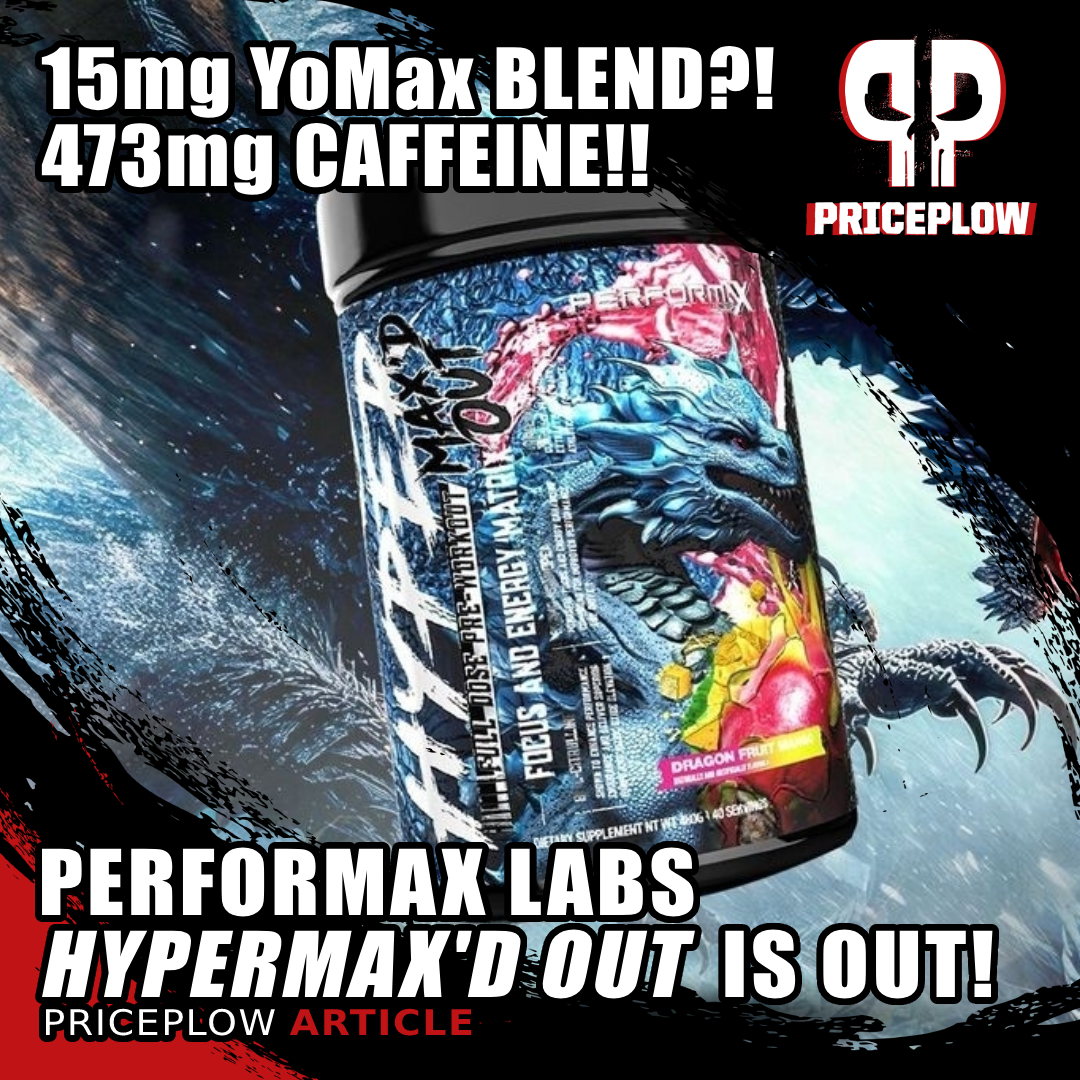
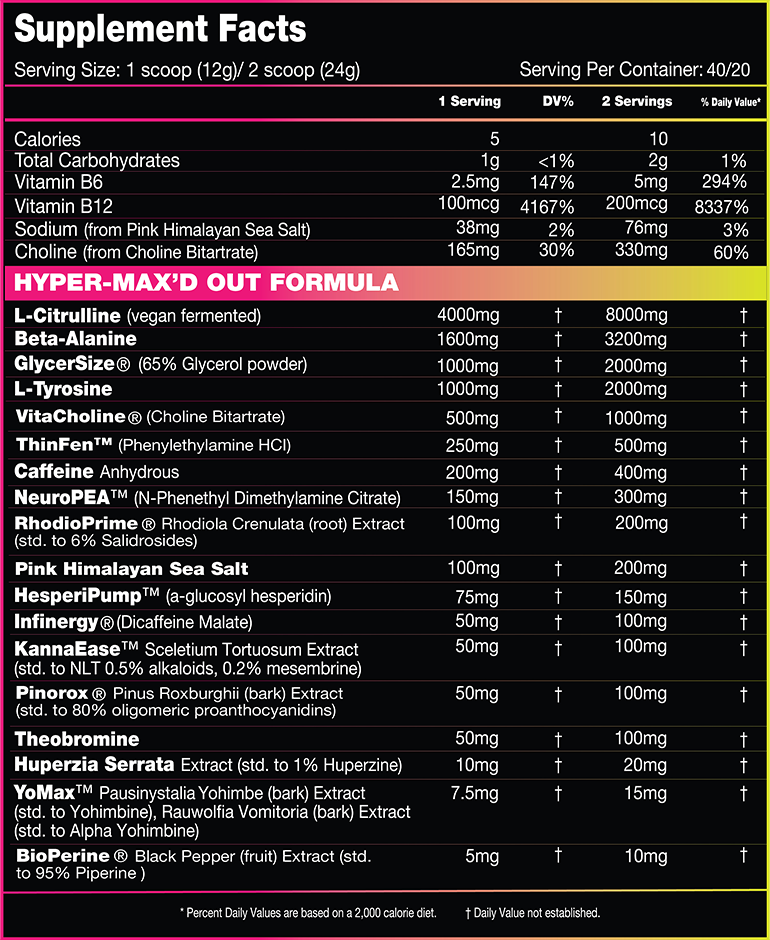

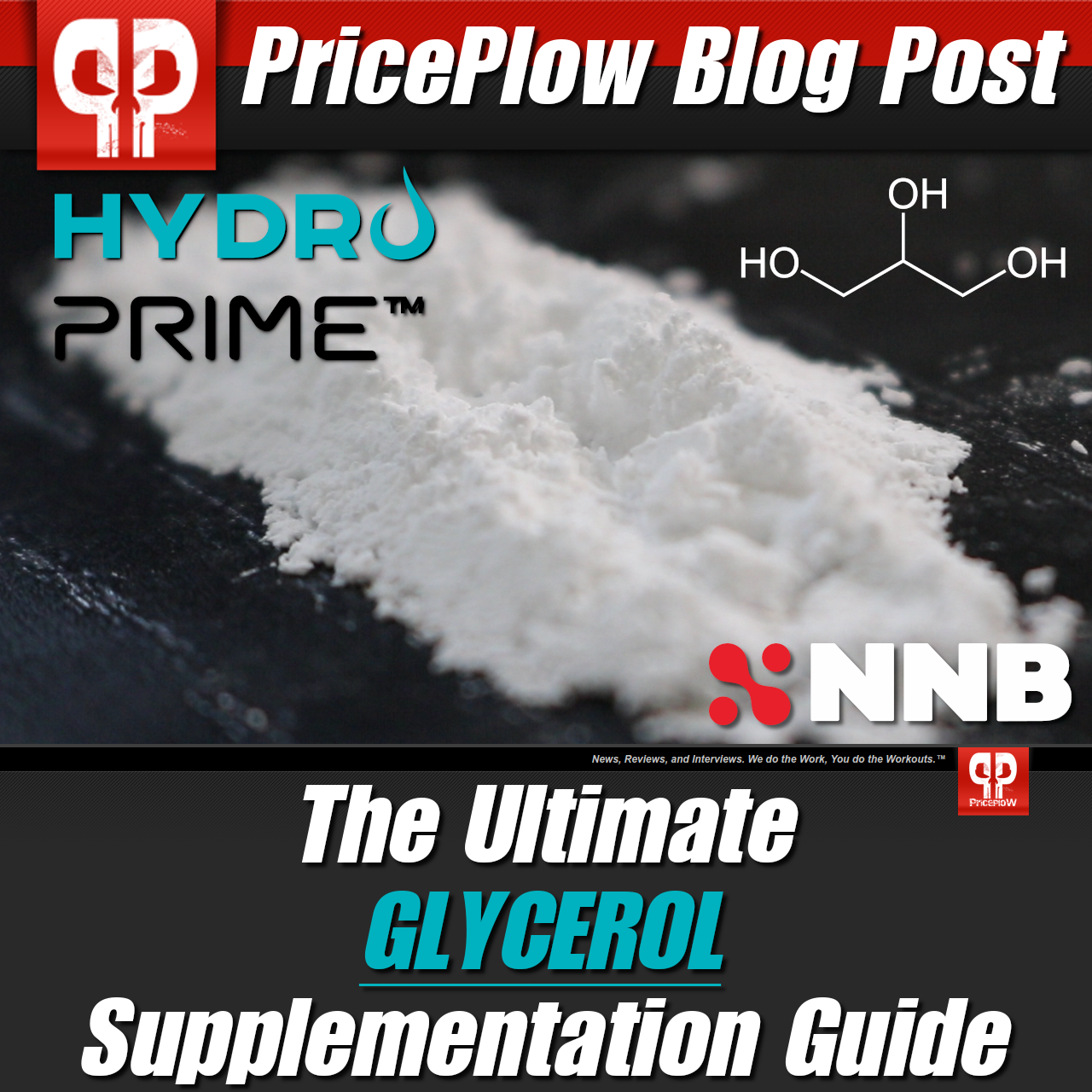
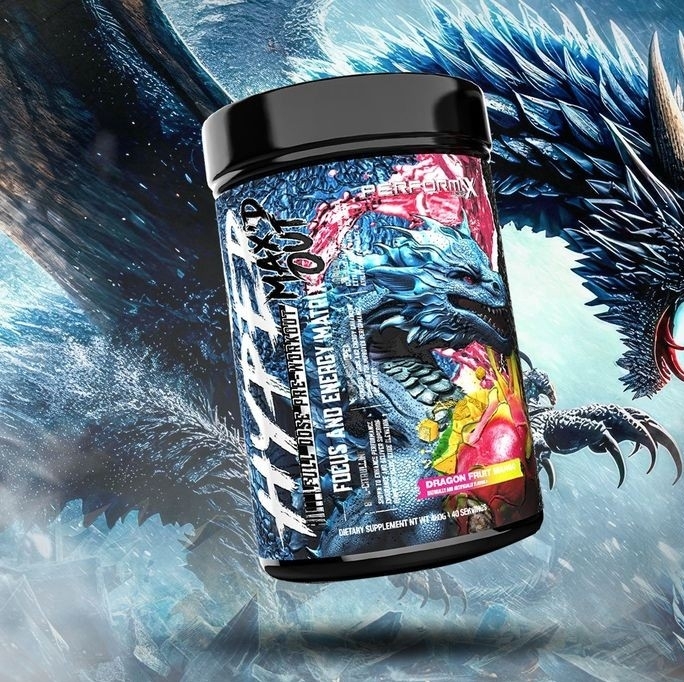

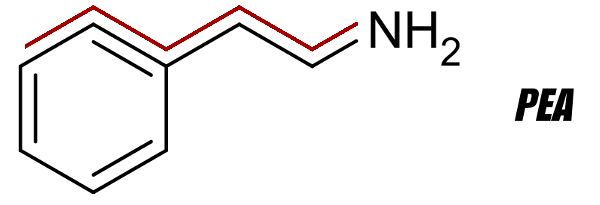
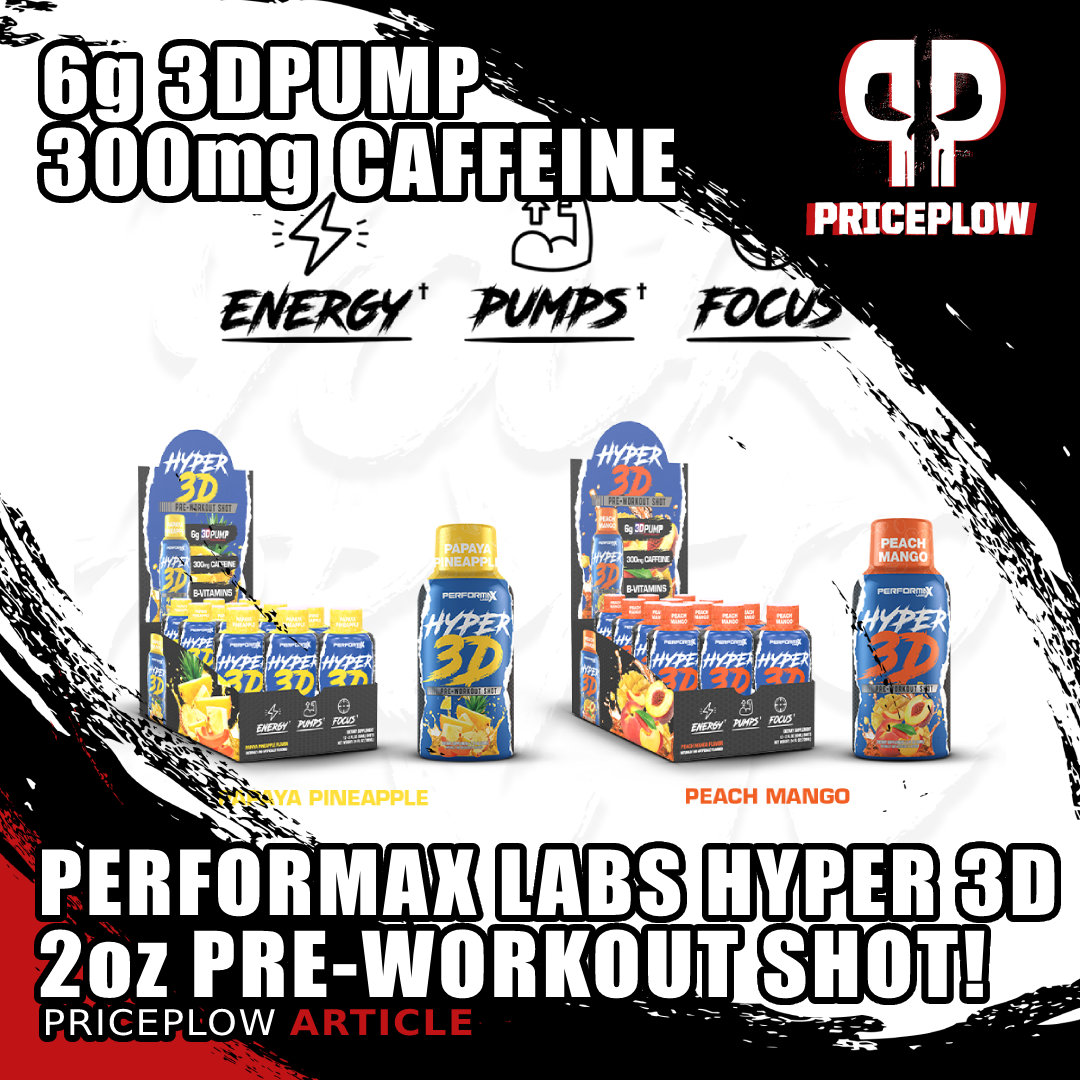

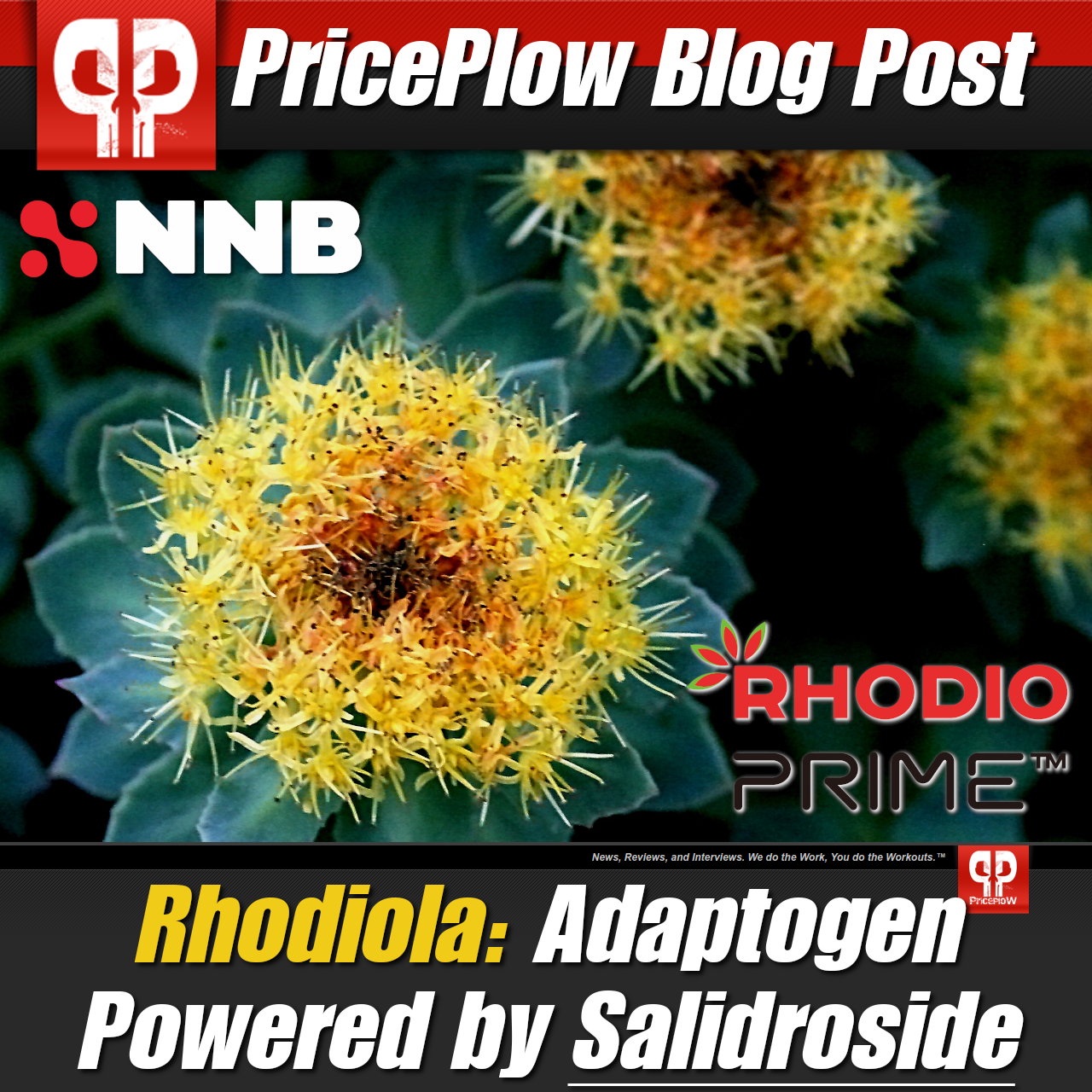
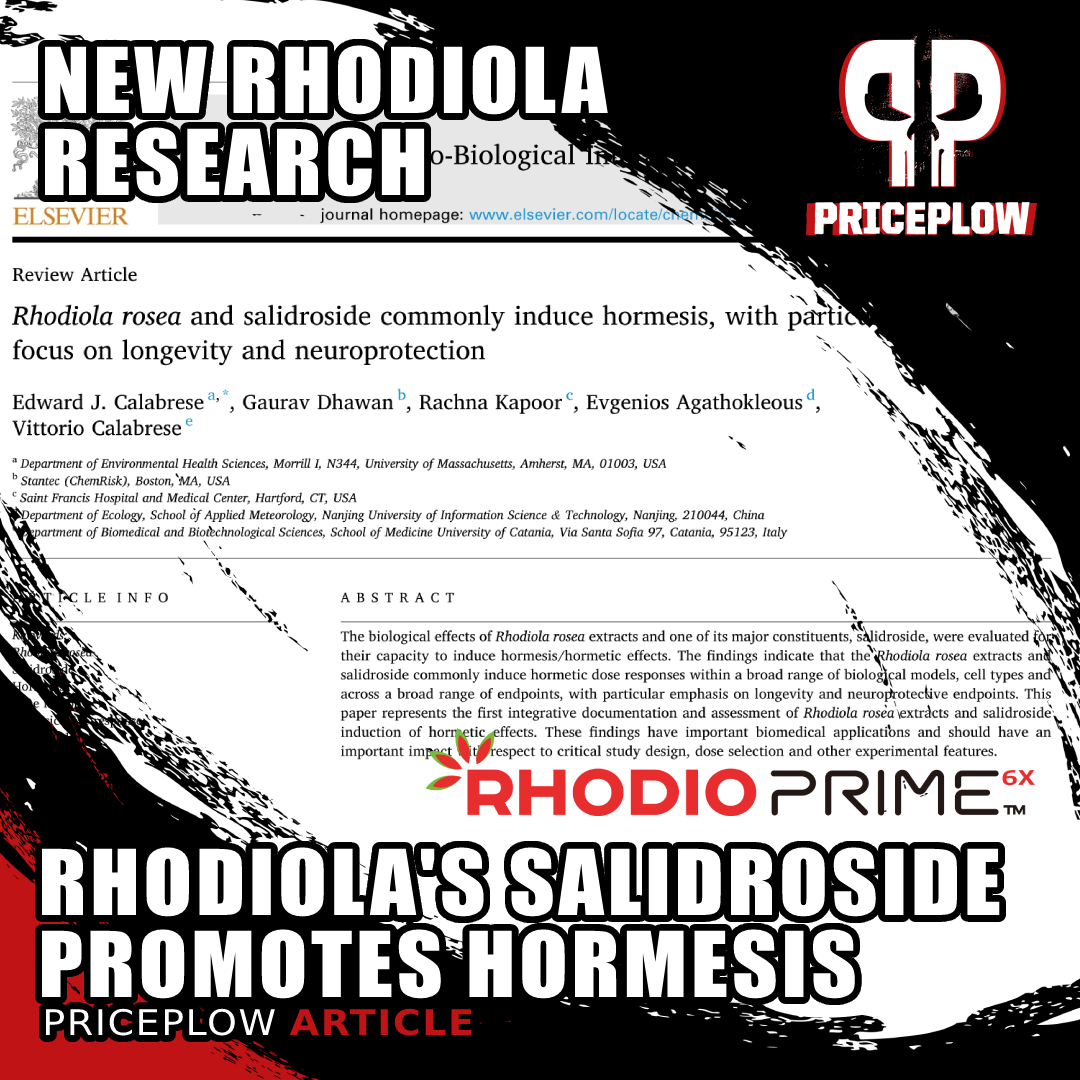


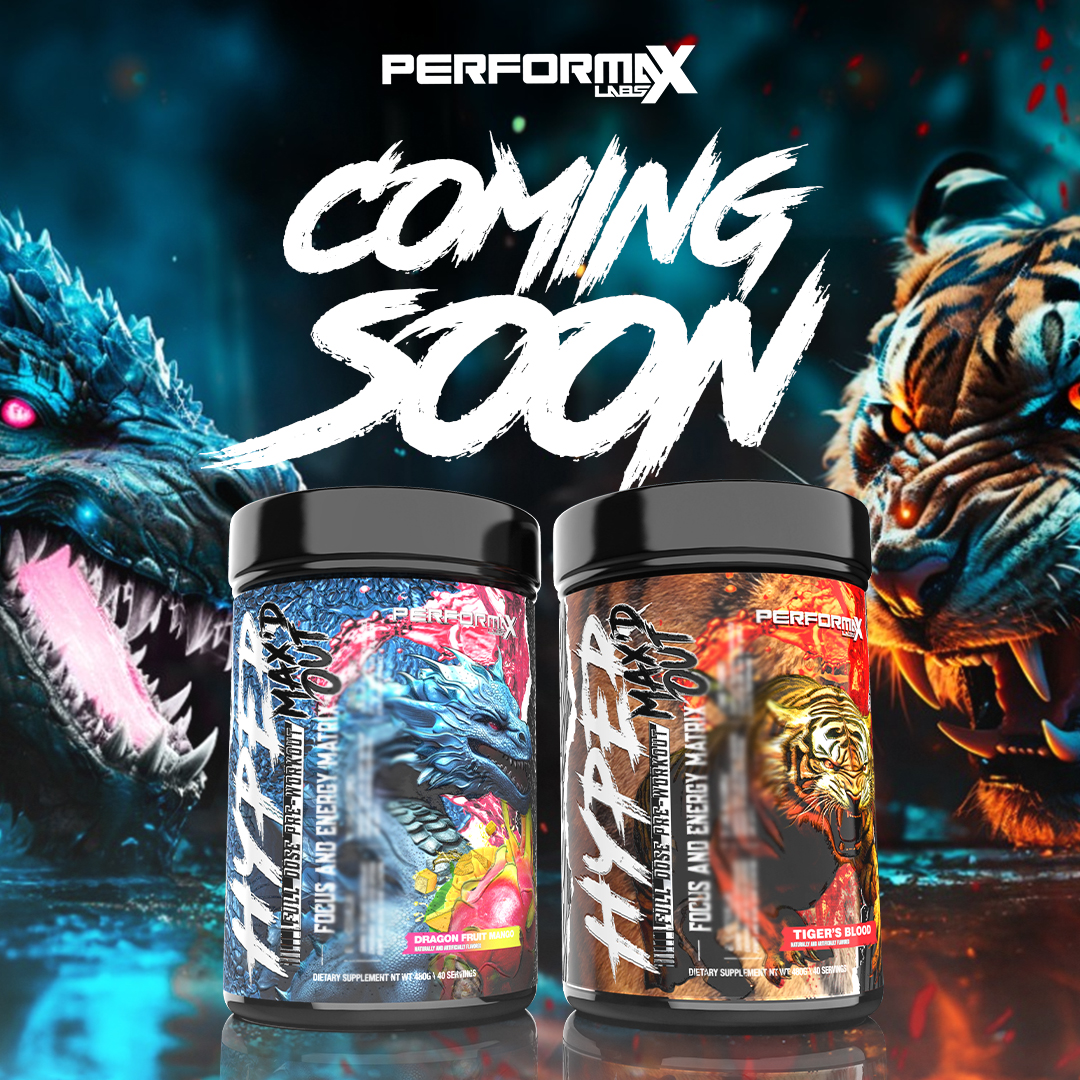

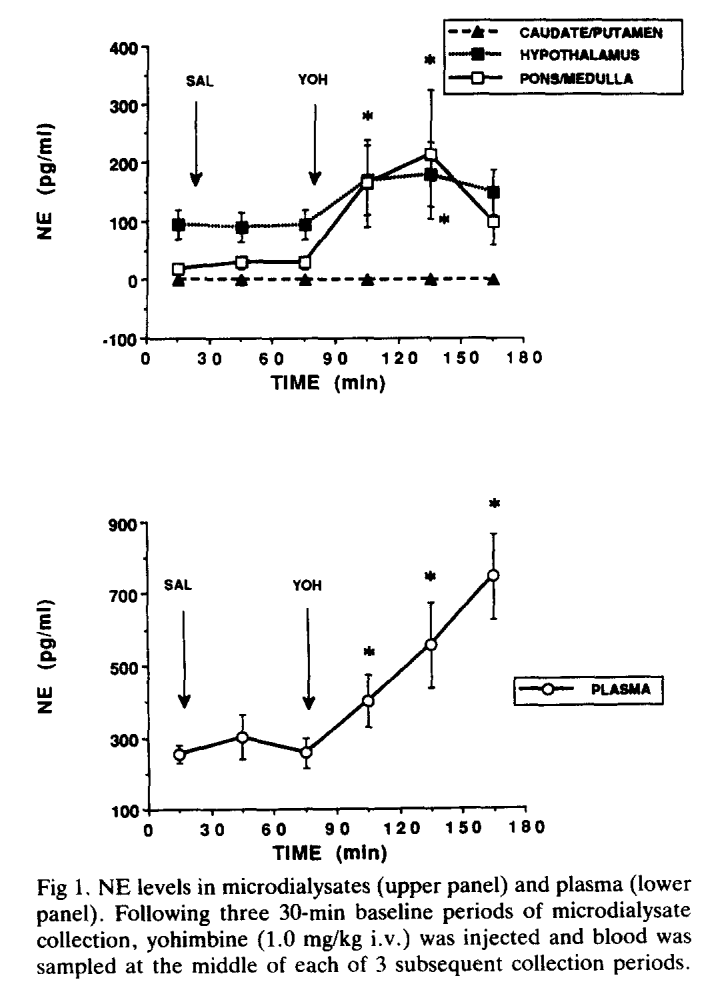
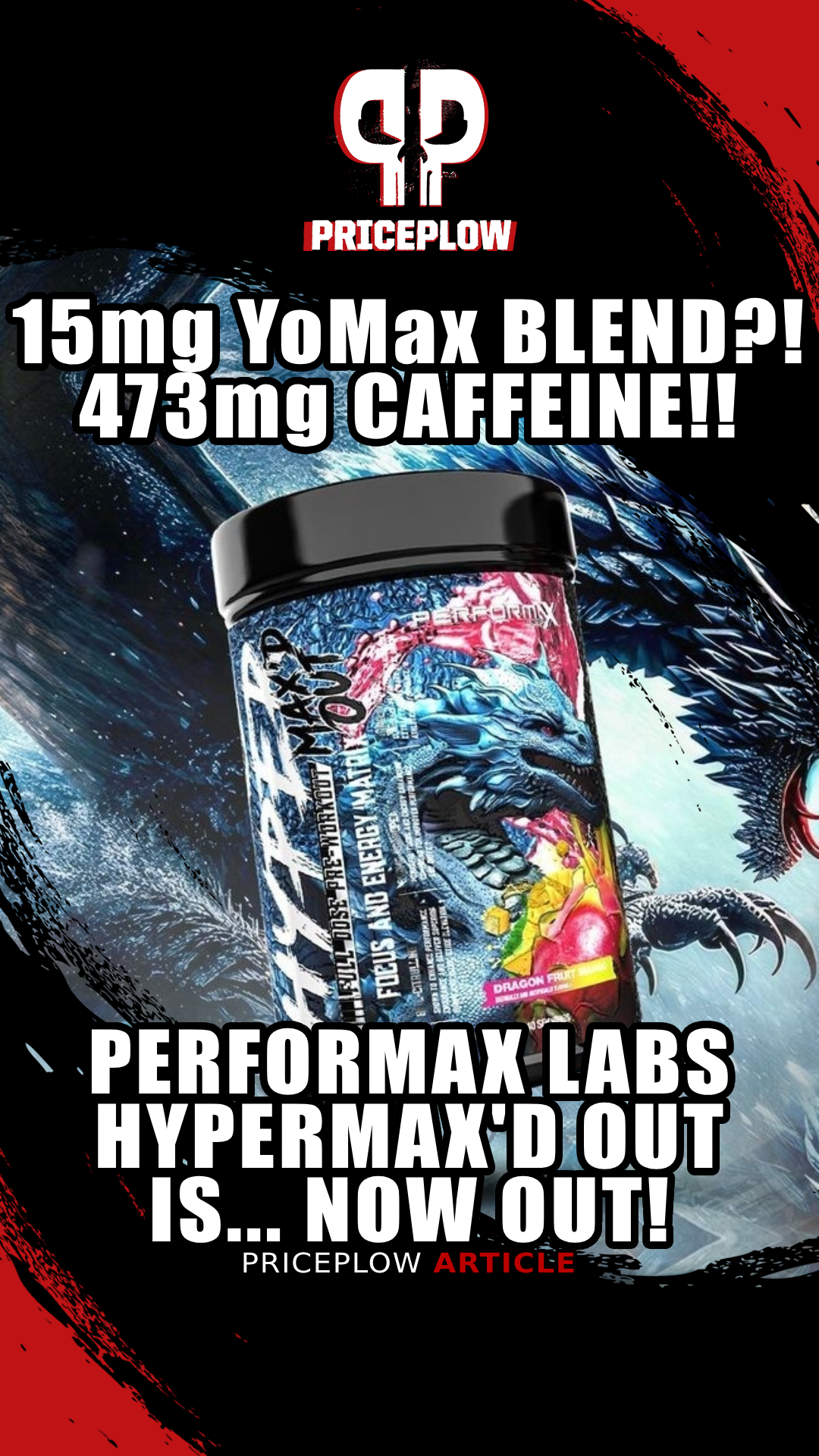


Comments and Discussion (Powered by the PricePlow Forum)